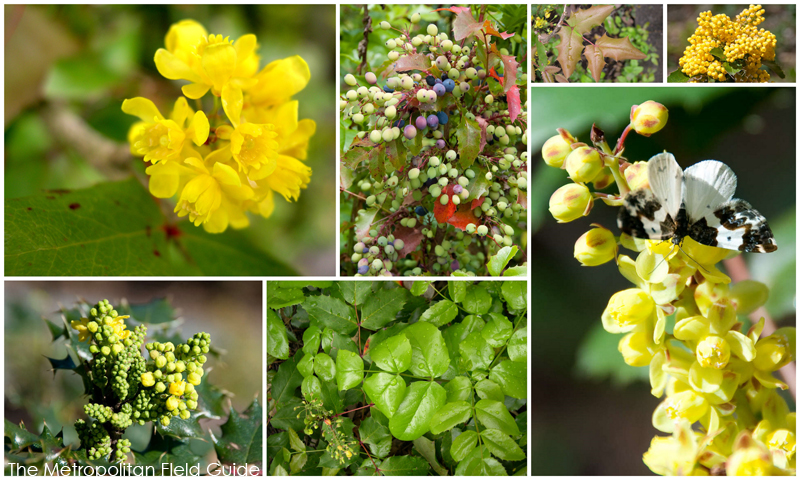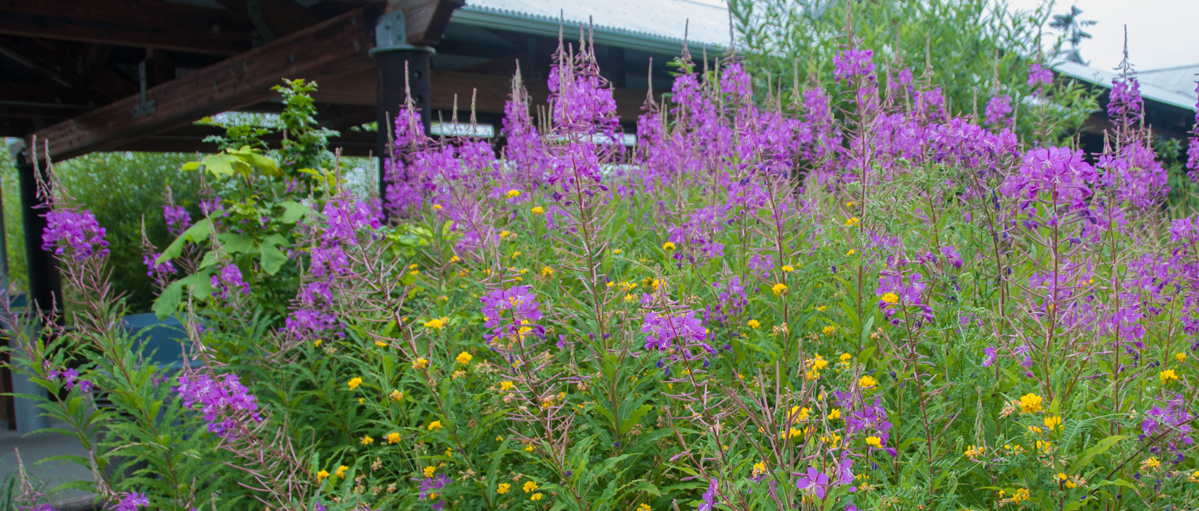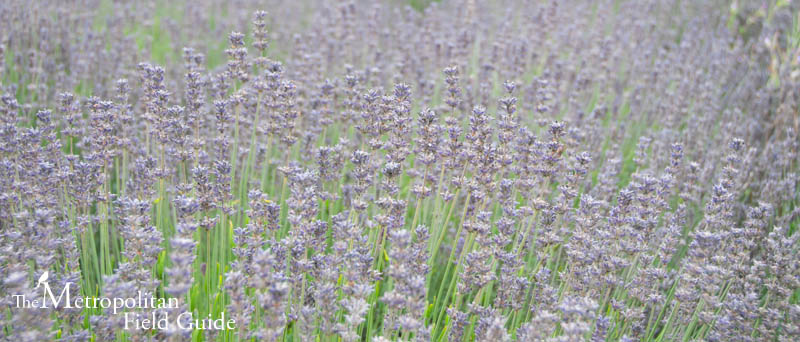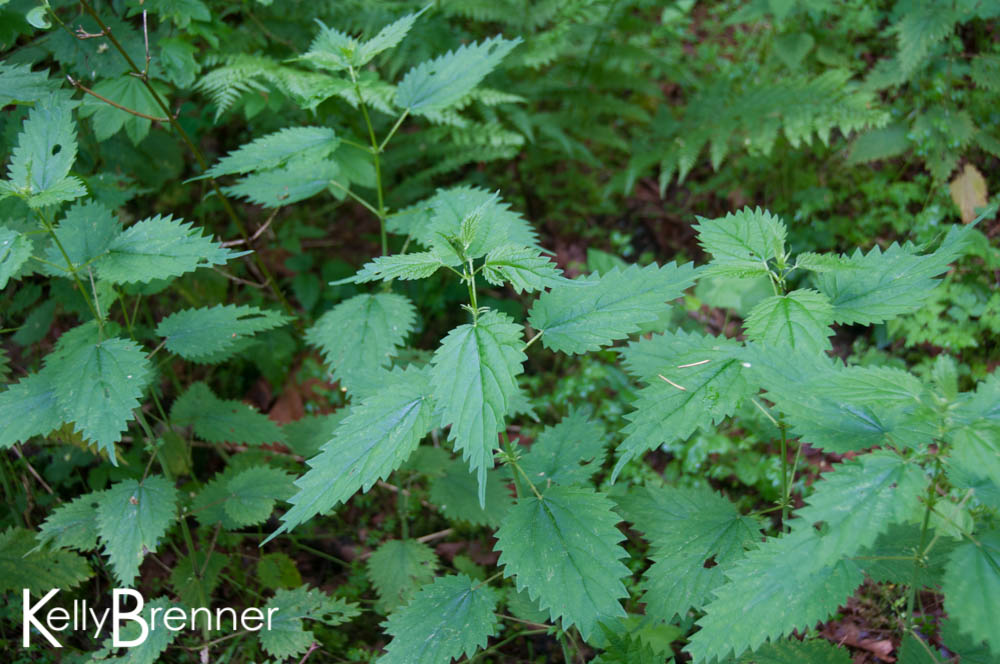There are a couple of varieties of Oregon-grape, a common evergreen shrub growing in the Pacific Northwest, Dull Oregon-grape and Tall Oregon-grape, which is the state flower of Oregon. From the Barberry family (Berberidaceae) is Dull Oregon-grape, or also simply called Oregon-grape (Mahonia nervosa) and Tall Oregon-grape (Mahonia aquifolium). Both have pinnate, glossy green leaves with spiny edges which are a red-bronze color when new. They also produce large clusters of small, bright yellow flowers which become dense clusters of blue berries with a dusty coating.
Tall Oregon-grape unsurprisingly, grows more upwards and taller than Dull Oregon-grape. Dull Oregon-grape tends to spread lower, rarely over two feet, and can also be used as a ground cover in filtered shade. Both Oregon-grapes can also be found in different habitats, Dull Oregon-grape is more commonly found in more moist open or closed forests at lower and mid-level elevations. Tall Oregon-grape can be found in drier conditions that are more open, often times found in second growth forests.
Tall Oregon-grape was one of the many plants collected during the Lewis and Clark expedition and then studied by Dr. Mahone. Tall Oregon-grape may be familiar to more than just the Pacific Northwest, it was introduced into Great Britain in 1823 and became an expensive ornamental. Dull Oregon-grape was introduced a year earlier making them very old ornamentals. The berries were historically eaten in small quantities, or mixed with Salal berries. Today, it’s a local delicacy to have Oregon-grape jelly. The bark was also used by the Native American’s as a dye which was bright yellow due to the alkaloid berberine inside. Both the bark and berries were used for medicinal purposes for liver, eye and gall-bladder ailments, but it can be very potent.
Tall Oregon-grape has commonly be used for garden landscaping as formal hedges or screen and borders as well as background planting. Dull Oregon-grape grows well in filtered shade under large trees and can also be used as a ground cover. It’s popular because of the bright flowers which bloom early and the fruit that follows, particularly when planted with other woodland plants such as Sword Fern and Salal.
The flowers of Oregon Grape are attractive to bees, butterflies and moths and bloom from March through June. It’s also a food source for birds and small mammals. Among birds that will eat the berries are forest birds such as grouse and pheasants as well as common songbirds such as robins, waxwings, juncos, towhees and sparrows. Small mammals include foxes, coyotes and raccoons. Painted Lady butterflies are known to use the nectar of the Tall Oregon-grape and I observed a Half-white Carpet Moth frequenting the flowers as well. Orchard mason bees are also known to frequent the flowers of Tall Oregon-grape for their nectar. Mining bees and bumble bees in addition to mason bees are the most common visitors. Dull Oregon-grape may also attract other pollinators. Both Oregon-grapes can be used by a variety of wildlife species for protection thanks to the plants spiny leaves and dense growth, especially when planted in groups.
Further Reading::
Gardening with Oregon Natives West of the Cascades:: Oregon State University Extension Service
Mahonia aquifolium Tall Oregon Grape:: Washington Native Plant Society
Mahonia nervosa Dull Oregon Grape:: Washington Native Plant Society
Mahonia aquifolium:: Lady Bird Johnson Wildflower Center
Mahonia nervosa:: Lady Bird Johnson Wildflower Center
Plants Of The Pacific Northwest Coast: Washington, Oregon, British Columbia & Alaska
Landscaping for Wildlife in the Pacific Northwest







I love them because they’re native, grow well in sun or shade, and with almost any amount of water. They have 4 seasons of interest too. Amazing plants, proud to have them in my garden and yard!
I have two large bushes that were planted 20 years ago. Now I have small ones growing elsewhere in the yard. I live in southern Arizona at 4500 feet. They start blooming in January here and the fruit starts to ripen in May. Now early June the berries are ripening fast. They last a long time as the ONLY BIRD that eats these berries is the Mockingbird.